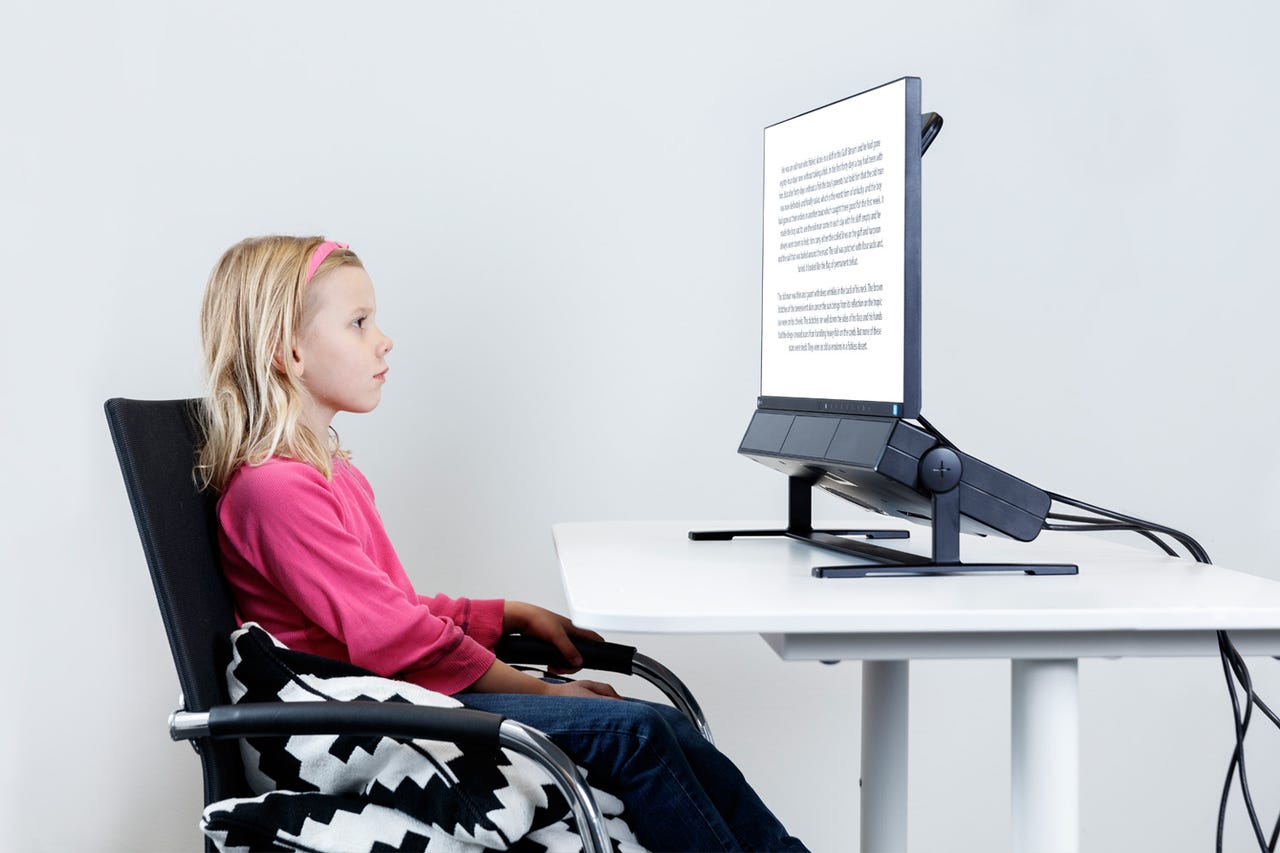New Tobii products could make eye tracking a bigger part of scientific research


The new Tobii Pro Spectrum is eye-tracking hardware that sits below a screen or real-world stimuli.
Innovations in eye-tracking technology have had clear commercial applications, unlocking possibilities in virtual reality, advancing sophisticated market research, and even empowering people with disabilities to control their devices with their eyes.
AR + VR
The technology's applications in more basic scientific research have been just as impactful: It helps, for instance, psychologists working on detecting signs of autism and neuroscientists studying the effects of treatments on Parkinson's disease.
Swedish eye-tracking company Tobii Group has had a hand in developing just about all of these applications through its different divisions. On Thursday, Tobii Pro, the research-focused arm of the company, is rolling out new hardware and software products that have the potential to put eye-tracking technology in the hands of more scientific researchers.
"We want to make it possible for anybody to conduct eye tracking studies very easily," Tom Englund, president of Tobii Pro, told ZDNet. With applications in so many fields, like psychology or linguistics, "you shouldn't have to be an eye-tracking expert" to take advantage of it.
The new Tobii Pro Spectrum is eye-tracking hardware with a frame rate high enough to capture fast eye movements, even when a person's head is moving. While other eye trackers on the market typically require a research subject to keep his head still to monitor subtle eye movements, this eye tracker allows for natural movement -- a key innovation for researchers in areas like infant and child development, where keeping the subject's head still just isn't practical.
The Pro Spectrum has two cameras that can capture movement (in both eyes) at a rate ranging from 60 to 600 frames per second. The device, which sits below a screen or real-world stimuli, doesn't emit any visible light, so it's unobtrusive and can accurately capture where the subject is looking.
Additionally, the device can be used on a wide range of subjects, regardless of factors like their age, ethnicity, or whether they wear corrective lenses or makeup. That robust tracking capability comes from the algorithms Tobii developed after developing a patented 3D mathematical model of the human eye. After 15 years of R&D, "that's the secret sauce" driving Tobii innovations, Englund said.
The company is also rolling out a new software platform called Tobii Pro Lab, which is designed to support the entire workflow of an eye-tracking study -- from designing the study to recording findings and producing analysis and visualizations.
The software is suitable for research requiring very high precision in timing, allowing stimuli to be shown on screen for as little as 50 milliseconds. It also allows researchers to combine their eye-tracking results with other biometric data streams, such as EEG (brain activity), GSR (sweat production due to emotions or stress), and ECG (heart activity). For example, Englund said, "If you're running a reading test with kids, you might want to capture their brain waves while they're reading the text."
The software works with all Tobii Pro hardware and is tightly integrated with certain third-party hardware for collecting biometric data, allowing researchers to "plug and play," Englund said. For other pieces of hardware that aren't supported out of the box, the software gives synchronization signals that allow the data to be stitched together.
This release of the software also includes a Tobii Pro SDK, allowing researchers to build their own customized applications with screen-based Tobii Pro eye trackers.
As eye-tracking technology advances, so do the use cases, Englund said, noting that there are entirely new fields of research taking advantage of it, such as human performance. For instance, researchers could use eye-tracking devices to study where a quarterback is looking as they look for their teammates, or where an air traffic controller is looking on screen when their performance is at its best.
"It's an exciting time of the eye-tracking industry because there's a rapid adoption of eye-tracking technology as a research method," Englund said. "We're improving the technology to a point where it's both easy to use and affordable and available for a much bigger audience than when it was only used in high-end research labs in prominent universities with large research budgets."